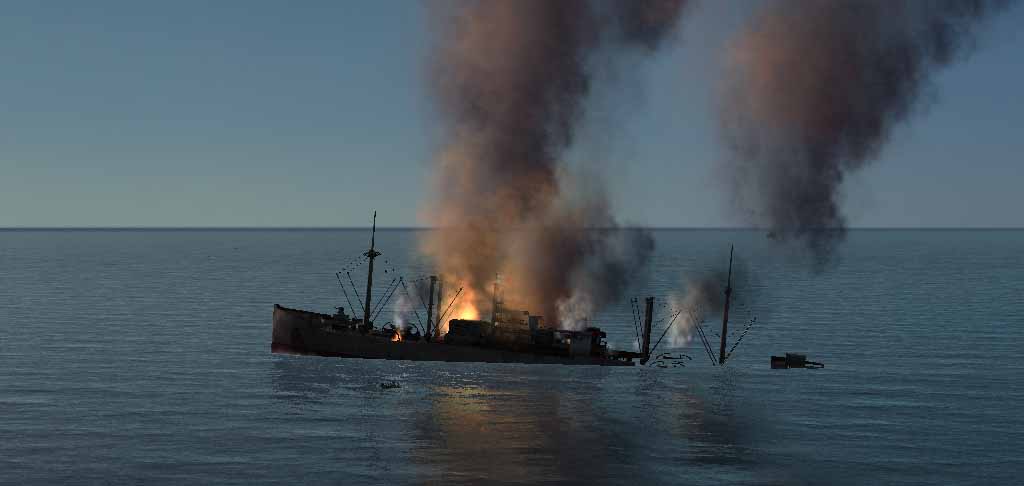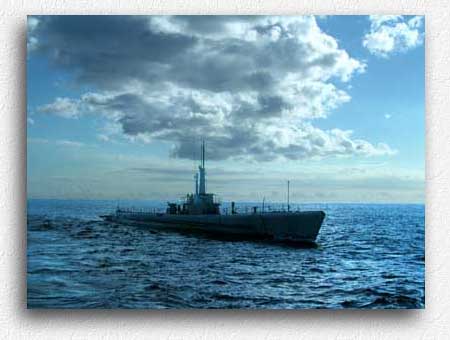|
USS DRUM

The Drum refers to any of various fishes capable of making
a drumming noise; best known, and named for a large sea bass off the North
Atlantic Coast. The USS DRUM (SS-228) was launched May 12, 1941 by Portsmouth
Navy Yard, New Hampshire, sponsored by Mrs. Thomas Holcomb. She was
commissioned November 1, 1941, CDR R.H. Rice in command. DRUM arrived at Pearl
Harbour from the east coast April 1, 1942, and after a voyage to Midway, cleared
Pearl Harbour April 14, 1942, action bound on her first
war patrol. Cruising off the coast of Japan,
she sank the seaplane Tender MIZUHO and three cargo ships in the month of May,
returning to Pearl Harbour June 12th to refit. DRUM's second war patrol, which
she made in the waters between Truk and Kavieng from July 10th to September 2nd,
found her efforts frustrated by poor torpedo performance, but she damaged one
freighter before returning to Midway to refit. The submarine sailed from Midway
September 23rd 1942 on her third war patrol, bound for the eastern coast of
Kyushu. On October 8th she contacted a convoy of four freighters, and defied
the air cover guarding the ships, to sink one of the cargo ships before bombs
forced her deep. The next day, underwent a severe depth charging from several
escorts after she attacked a cargo ship. Later in the patrol, she sank one of
three air-escorted cargo ships, and damaged at least two more ships before
completing her patrol at Pearl Harbour November 8th. On her fourth patrol,
between November 29th and January 24th, 1943, DRUM carried out the demanding
task of planting mines in heavily travelled Bungo Suido. On December 12th, she
contacted a carrier, RYUHO, with a full deck load of planes. Although taking
water forward due to faulty valves, DRUM launched torpedoes at this choice
target, scoring two hits, and causing the carrier to list so far that her flight
deck became completely visible. Also visible was a destroyer bearing down, and
splashes that indicated DRUM's periscope was under fire. As the submarine dove
she lost depth control and her port shaft stopped turning. As she made
emergency repairs, she underwent two waves of depth charging. When she surfaced
several hours later to see what had become of her prey, an airplane forced her
down.
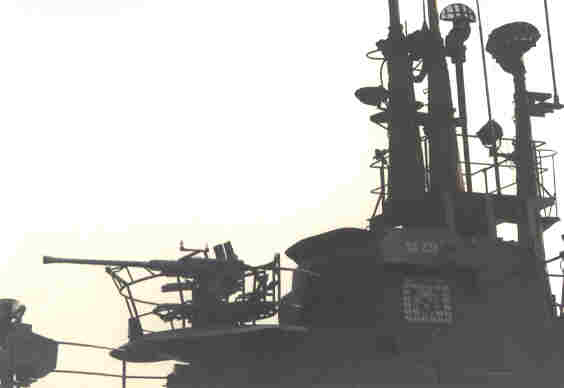
During this patrol, DRUM damaged a large tanker, another
choice target. After a thorough overhaul at Pearl Harbour, DRUM made her fifth
war patrol between March 24th and May 13th 1943, searching waters south of Truk
after she had made a photographic reconnaissance of Nauru. She sank two
freighters in April, then refitted at Brisbane, Australia. Her sixth war
patrol, between June 7th and July 26th, found her north of the Bismarck
Archipelago, sinking a cargo-passenger ship on June 17th. Again she put into
Brisbane to replenish, and on August 16th sailed on her seventh war patrol.
Adding to her already impressive list of sinkings, she sent a cargo ship to the
bottom on August 31st, as well as patrolling off New Georgia during the landings
there. She put into Tulagi from September 29th to October 2nd to repair her
gyro compass, then sailed on to Brisbane. DRUM sailed November 2nd 1943
for her eighth war patrol, coordinated with the landings at Cape Torokina.
Patrolling between the Carolinas and New Ireland, she sank a cargo ship on
November 17th and on November 22nd, attacked a convoy of four freighters. The
convoy's escorts delivered three depth charge attacks, the DRUM was damaged
heavily and was ordered to Pearl Harbour. DRUM returned there on the 5th of
December. After inspection showed the conning tower needed to be replaced, she
sailed to the west coast. Returning to Pearl Harbour March 29th 1944, DRUM sailed
11 days later on her ninth war patrol, during which she patrolled the waters
around Iwo Jima and other islands in the Bonins. No worthy targets were
contacted, but a reconnaissance of Chichi Jima gained valuable intelligence for
bombardment of the island later by surface ships. The submarine refitted at
Majuro between May 31st and June 24th, then sailed on her 10th war patrol to
give lifeguard service for raids on Yap and Palau. She sank a 125-ton sampan
on July 29th, capturing two prisoners with whom she arrived at Pearl Harbour on
August 14th. She sailed for Surigao Strait September 9th on her 11th war
patrol, and after two weeks in the Strait with no contact, was ordered north to
the South China Sea. Here she patrolled during the Leyte landings and the
decisive Battle for Leyte Gulf, sinking three cargo ships bound to reinforce
Japanese troops fighting to keep the Philippines. While bound for Majuro for
refit, DRUM searched east of Luzon Strait for downed aviators. DRUM replenished
and made repairs at Majuro between November 8th, 1944 and December 7th, then
sailed on her 12th war patrol for the Nansei Shoto. Only one contact was made
during this patrol, from which she returned to Guam January 17th, 1945. During
her 13th war patrol, from February 11th to April 2nd, DRUM played a part in the
assaults on both Iwo Jima and Okinawa, providing lifeguard service for air
strikes on the Nansei Shoto and the Japanese home islands as bases were
neutralized before both invasions. Returning to Pearl Harbour, DRUM sailed on
to a west coast overhaul, and after training at Pearl Harbour, cleared Midway
August 9th on what would have been her 14th war patrol. She proceeded to Sai
Pan at the end of hostilities, and from there sailed for Pearl Harbour, the Canal
Zone, and Portsmouth, New Hampshire. DRUM was decommissioned February 16th, 1946
and on March 18th, 1947, began service at Washington, D.C., to members of the
Naval Reserve in the Potomac River Naval Command, which continued through 1967.
She was in the inactive Fleet at Norfolk, Virginia from 1967 to 1969. Of DRUM's
13 war patrols, all save the second, ninth, and last two were designated
"successful". She received a total of 12 battle stars for World War II service.
She is credited with sinking 15 ships, a total of 80,580 tons of enemy shipping,
eighth highest of all U.S. submarines in total Japanese tonnage sunk. * The DRUM
was donated to the USS ALABAMA Battleship Commission on April 14th, 1969. She
was towed to Mobile arriving May 18th, 1969. The DRUM was dedicated and opened
to the public on July 4th 1969.
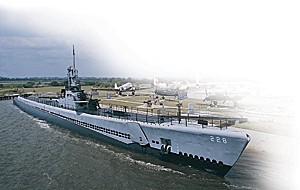
The GATO Class
submarine USS DRUM (SS 228) was built at the Portsmouth, New Hampshire Navy Yard
and
commissioned on 1 November 1941. After training and equipment checks, she
arrived at Pearl Harbour
on 1 April 1942 to begin a series of 13 war patrols as
summarized below:
|
DRUM's War Patrols
|
|
Underway 14 April 1942 |
|
Underway 10 July 1942
|
damaged one Japanese
freighter |
|
Underway 23 September
1942 |
sank 3 Japanese
freighters & damaged 2 other cargo ships |
|
Underway 29 November
1942 |
damaged the
Japanese aircraft carrier RYUHO and a tanker |
|
Underway 24 March 1943 |
made a photo
reconnaissance of the island of Nauru and sank two freighters |
| Underway 7 June 1943 |
sank one Japanese
cargo-passenger ship |
| Underway 16 August 1943 |
sank one Japanese cargo
ship |
| Underway 2 November 1943 |
sank one Japanese cargo
ship and received heavy damage under depth charge attack from enemy escort
ships |
| Underway 9 April 1944 |
made a photo
reconnaissance of the island of Chichi Jima |
| Underway 24 June 1944 |
sank one Japanese sampan |
| Underway 9 September 1944 |
sank three Japanese cargo
ships |
| Underway 7 December 1944 |
could not detect any enemy
shipping |
| Underway 11 February 1945 |
provided pilot rescue
& reconnaissance for the invasions of Iwo Jima and Okinawa |
|
USS DRUM STATS
|
|
Displacement: |
1,526 tons surfaced, 2,424 tons submerged |
|
Length: |
311 ft. 8 in. |
|
Breadth: |
27 ft. 4 in. |
|
Draft: |
15 ft. 3 in. |
|
Speed: |
20 knots |
|
Crew: |
7 Officers, 65 Enlisted Men |
|
Maximum Diving Depth: |
400 ft. |
|
Armament; varied during WWII,
presently:
|
|
1 |
5"/25 calibre gun |
|
1 |
40mm single mount |
|
1 |
20mm twin mount |
|
10 |
DRUM sank 15
ships for cumulative displacement of 80,580 tons, ranking eighth among American
submarines, earning 12 Battle Stars for her World War II service. She was
decommissioned 16 February 1946, but reactivated 18 March 1947 to serve as a
training ship for naval reservists around Washington, DC, where she remained
throughout most of the 1960's. She was opened for public display at USS ALABAMA
Battleship Memorial Park on 4 July 1969.

USS Seacat
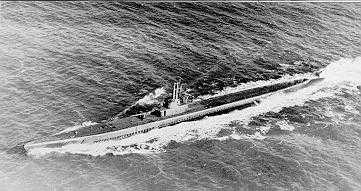
USS Flasher

Two images of the USS Herring
USS HERRING (SS-233) 1JUN44
(84 LOST)
Japanese Shore Battery off Matsuwa Island, Kuriles
HERRING, under Lt. Cmdr.
D. Zabriskie, Jr., left Pearl Harbour on May 16, 1944 to conduct her
eighth patrol in the Kurkle Islands. On May 21st she topped off with fuel
at Midway and departed for the Kurile region. No word was received from
HERRING direct after her departure from Midway, but she did accomplish a
rendezvous with BARB on May 21, 1944.
These two boats were to
patrol the Kurile Islands area cooperatively, and at the rendezvous, as
recorded in BARB’s report of her eighth war patrol, the areas for which
each was to be responsible were delineated. A few hours after leaving
HERRING early on the afternoon of May 31st, BARB made contact with two
Japanese merchantmen. While developing the contacts BARB heard distant
depth charging, which she took as an indication that HERRING was making an
attack.
Later that evening BARB
picked up a prisoner who revealed that HERRING had sunk the escort vessel
of the convoy BARB had been attacking. The ship sunk was ISHIGAKI, a new
type DE built in 1942, and it was sunk with one torpedo hit. The sinking
resulted in the scattering of the three-ship convoy and two ships, which
subsequently passed near BARB, were sunk by her. Post-war information
reveals that HERRING sank the third merchantman of the convoy.
On June 3, 1944 orders were sent to BARB and HERRING directing them to
stay outside of a restricted area in which friendly surface ships would be
operating during the Marianas Campaign. A receipt was required for this
message, but none was heard from HERRING. BARB was unable to contact her
after May 31st. Consequently on June 27th, Midway was directed to post a
sharp lookout for HERRING, which might be returning without ability to
transmit by radio, and was expected by July 3rd or 4th. When she had not
appeared by July 13, 1944, HERRING was reported as presumed lost.
Japanese information
indicates that HERRING was sunk on June 1, 1944, two kilometres south of
Point Tagan on Matsuwa Island in the Kuriles. The report states that two
merchant ships, HIBURI MARU and IWAKI MARU, were sunk by American
torpedoes while at anchor at Matsuwa. In a counterattack, a shore battery
scored two direct hits on the conning tower, and “bubbles covered an area
about 5 meters wide, and heavy oil covered an area of approximately 15
miles.” The position of this attack was around 150 miles from the position
where HERRING met BARB: the attack occurred on the day after the BARB
picked up her prisoner. BARB and HERRING were the only U.S. submarines in
the area at the time and BARB did not make attacks reported by BARB and by
the Japanese, HERRING has been credited with four ships and 13,202 tons
sunk for her last patrol.
For her first seven
patrols, HERRING sank nine ships, totalling 45,200 tons, and damaged two,
totalling an additional 8,400 tons. Her first four patrols were in the
Atlantic, the first three off the coast of Spain, and the fourth near
Iceland. The first netted an Axis freighter, while on the second HERRING
saw no enemy ships. Her third patrol saw her sink Nazi U-163 and her
fourth was again unproductive of enemy targets. Her fifth patrol was the
passage from the United Kingdom, where she had been based for her Atlantic
patrols, to New London, Conn., thence to Pearl Harbour. She patrolled the
East China Sea on her sixth war run, and sank two large transports, a
freighter, and a small escort type vessel. HERRING’s seventh patrol was in
the area just south of the Japanese home islands; here she damaged a
destroyer type vessel.
|
|
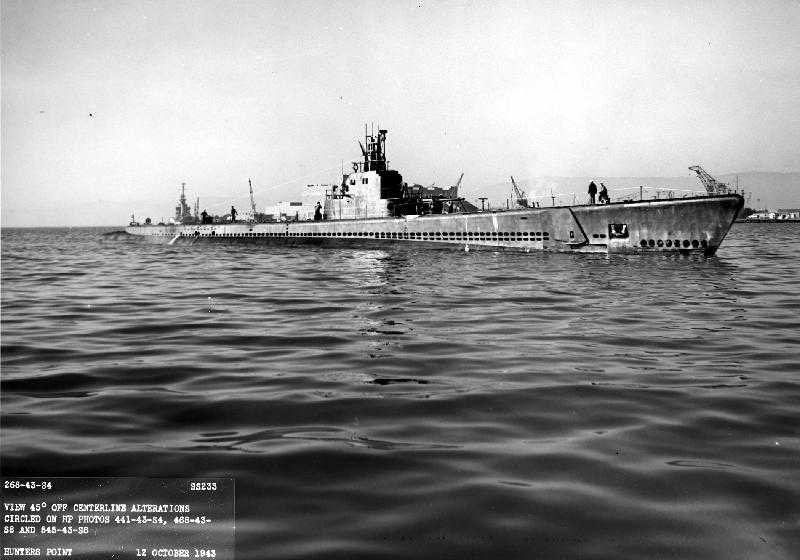
USS Seadragon SS194

dp. 1475 tons
(surf.), 2370 tons (subm.); l. 307'; b. 27';
s. 20k (surf.), 9k (subm.); td. 250'; a. 1-3"/50, 4-21" tt. fwd., 4-21" tt.
aft.;
cpl. 5 officers - 54 enlisted men; cl. "SEADRAGON"
Keel laid by
the Electric Boat Co., Groton, CT, 18 Apr 38;
Launched: 11 Apr 39; Sponsored by Mrs. James O. Richardson;
Commissioned: 23 Oct 39 with LCdr John G. Johns in command;
Decommissioned: 15 Nov 45;
Recommissioned: 8 Feb 46;
Decommissioned: 29 Oct 46
Struck from the Navy List 30 Mar 48;
Sold for scrapping 2 Jul 48.
Following a
shakedown cruise off the east coast and in the Caribbean, USS
SEADRAGON (SS-194) returned to New England and, on 23 May 1940,
departed New London for the Philippines. With ComSubDiv17 embarked, she
arrived at Cavite on 30 November and commenced training operations as a
unit of the Asiatic Fleet. A year later, she prepared for overhaul; and,
by 8 December 1941 (7 December east of the International Date Line), she
had started her yard period at the Cavite Navy Yard. Two days later, on 10
December, she and sister ship USS SEALION (SS-195), moored
together, were caught in an enemy air raid against Cavite. SEALION
took a direct hit which demolished that submarine and damaged
SEADRAGON. The force of the explosion ripped off part of the latter's
bridge. Shrapnel and splinters punctured her tanks and pierced her Conning
Tower, killing one (Ensign Sam Hunter, the first WWII casualty for the
SubForce) and wounding five. The heat of the explosion scorched her hull
and blistered her black paint. Fires and explosions raged along the wharf.
A nearby torpedo shop went up and flames reached toward a lighter, loaded
with torpedoes, alongside SEADRAGON and SEADRAGON.
Submarine Rescue Vessel USS PIGEON (ASR-6), however, disregarded
the danger and moved in to tow SEADRAGON out into the channel,
whence the submarine continued into Manila Bay under her own power.
Temporary
repairs were accomplished by submarine tender USS CANOPUS (AS-9)
and PIGEON; and, on the night of 15 December, she embarked
members of the Asiatic Fleet staff. At 0000, 16 December, she headed out
of Manila Bay. Escorted by destroyer USS BULMER (DD-222),
SEADRAGON moved south, via Surigao and Makassar strait to Soerabaja,
where she disembarked her passengers; received further repairs, exclusive
of a paint job, and prepared for her first war patrol. On 30 December, the
submarine departed the Dutch naval base and set a course for the South
China Sea to intercept Japanese shipping off the coast of Indochina. On 8
January, she was in the sea lanes to Cam Ranh Bay. Two days later, she
sighted a destroyer, fired two torpedoes which missed, then watched as the
destroyer continued on its course without attempting to attack the
submarine. SEADRAGON remained in the area. Shortly after noon, a
convoy was heard. One-half hour later, it was sighted, and the submarine
began closing the last ship in the column. Shortly after 1300, she fired;
missed; and again tried to close to firing position. Within an hour,
however, the convoy was safely into Cam Ranh Bay. SEADRAGON
retired eastward. After dark while on the surface, recharging, she sighted
a destroyer and attempted to slip away undetected. The destroyer
spotlighted her. SEADRAGON went deep and worked her way eastward
through two depth charge attacks. She spent the morning of the 12th
evading Japanese patrol planes. In the afternoon, she closed a six-ship
convoy; but, as she came to periscope depth for a final check, she was
spotted from the air. Three salvos of bombs dropped close aboard, but
SEADRAGON went deep and again made her way eastward -- this time to
investigate the cause of the plane sightings. She surfaced after 1800. No
oil or air leaks were spotted, but her black paint was coming off the
entire hull. Red lead undercoating showed from the waterline to the side
plating, and, "in spots," on the bow planes and propeller guards. In
shallow tropical waters, her original black paint was easily spotted
against a light colored background. With red showing, she stood out
regardless of the color of the seabed. From then on, SEADRAGON
ran at 140 feet between periscope exposures except in areas known to be
patrolled by air. She then went to 200 feet.
On the
14th, she patrolled in the Cape Varella area. On the 15th, she shifted
southward, and, on the 16th, she stood off Hon Lon to wait for a convoy.
At 1115, after a periscope observation, she was again spotted and bombed
from the air. She returned to Cape Varella where the depth of the water
permitted a closer patrol to the shore line. During the next six days, she
sighted several targets but had no luck with her torpedoes. Early on the
23d, she sighted a four-ship convoy which she stalked until daylight, then
attacked. At 0806, she fired at the lead ship and scored with a hit on the
port quarter. She then fired two at the ship and missed. The third and
fourth ships ran off to the southeast and west respectively. The second
ship moved in toward the first; then, listing to port and down by the
stern accompanied it as it ran for the beach. SEADRAGON surfaced
and went after the third ship, but the appearance of an enemy plane forced
her to break off the attack.

The
submarine remained off the Indochina coast for another four days, then set
a course back to Luzon. On the 29th, she began patrolling along the coast
from Subic Bay to Lingayen Gulf. On 1 February, she took up station off
San Fernando and, early on the morning of the 2nd, conducted a night
submerged attack on a five-ship convoy. The fourth ship in line, went
down, depriving the Japanese occupation force of a number of the
reinforcement troops and the equipment she carried. After the sinking,
SEADRAGON patrolled southward. On the 4th, she arrived off Luzon
Point; and, that night, she moved into Manila Bay to take on cargo and
passengers at Corregidor. Mooring at 2203, she completed loading
torpedoes, radio equipment, and submarine spare parts at 0300 on the 5th.
Shortly thereafter, she moved out; rested on the bottom until after dark,
then surfaced to take on passengers. At 1946, she got underway for the
Netherlands East Indies.
She arrived
at Soerabaja on 13 February. On the 21st, she left for Tjilatjap, whence
she was ordered on to Australia. She reached Fremantle on 4 March and two
weeks later, again headed for the Indochina coast for her second war
patrol. At the end of the month, she was diverted to Cebu to take on fuel
and food for Corregidor. On the evening of 8 April, she arrived off that
besieged base. At 2053, she moored alongside SEADRAGON, to which
she transferred fuel; offloaded 7 tons of food; took on 21 passengers;
and, at 2129, she got underway to resume her patrol. She remained in the
waters off south western Luzon and recommenced her patrol off the entrance
to Subic Bay. On the 11th, she sighted several targets but was able to
attack only one, a patrolling destroyer. At 1720, she fired three
torpedoes. Twenty-nine seconds later the first torpedo exploded halfway to
the target. The second torpedo broached and circled abeam of the target.
The destroyer avoided the third torpedo. SEADRAGON changed course
and went to 200 feet to avoid the circling torpedo and the expected depth
charging. None of the depth charges was close, but a second destroyer soon
joined the first, spotted the submarine as she came up for a periscope
observation, and turned on her. SEADRAGON again went deep, then
cleared the area.
On the
12th, the submarine started south. On the 20th, she cleared Lombok Strait;
and, on the 26th, she returned to Fremantle. On her third patrol, 11 June
to 2 August 1942, SEADRAGON returned to the South China Sea.
Arriving in her assigned area on 27 June, she patrolled along the
Singapore-Hong Kong routes to the end of the month; then shifted to the
Cape Varella area. On the morning of 4 July, she fired a torpedo at the
leader of a three ship formation. The torpedo missed ahead, all three
ships changed course toward SEADRAGON with the leader proceeding
down the torpedo track firing her bow gun. Depth charges were dropped
indiscriminately. Ten minutes later, the three had turned toward shore.
SEADRAGON then shifted southward to intercept enemy traffic off
Hon Lon Light. A few hours later, she sighted two freighters and fired
tubes 1 and 2 at the lead ship. Her No. 1 tube did not fire, and her No. 2
torpedo missed astern. Two more torpedoes were fired at the ships, but
both missed. Enemy planes arrived on the scene soon afterward and for over
two hours aerial depth charges in salvos of 2 and 3 were dropped. Despite
water depth of 75 fathoms, submarines were visible at any depth against
the light coloured bottom.
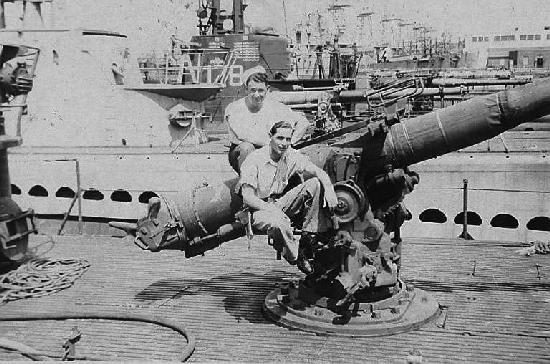
SEADRAGON survived the close bombing and continued her patrol. During
the next week, she attempted to close several ships, but was unable to
attain attack positions. On the night of the 11th, her losing streak
ended. Just prior to midnight, she sighted smoke and opened out to the
westward to overtake the target. At 0156 on the 12th, she began her
approach; and, 14 minutes later, she fired three torpedoes. Two hit, but
the third missed astern. The merchantman began settling. By 0219, she had
been abandoned. SEADRAGON submerged and resumed her patrol eight
miles northeast of Cape Varella. On the morning of the 13th, SEADRAGON
torpedoed and sank her second victim of the patrol. The target was hit
approximately 50 feet abaft the beam and settled immediately.
SEADRAGON moved out of the area and hunted along the Haina Varella
routes for a few days. On the 16th, she was back off Cape Varella; and,
soon after 1030, she fired on a four-ship convoy. Five minutes later, the
torpedoes exploded on the beach. The four ships turned toward
SEADRAGON and commenced firing their guns. SEADRAGON fired
two more torpedoes and went deep. A few minutes later, she came to
periscope depth. Only three ships remained on the surface, One had been
sunk.
On 20 July,
SEADRAGON departed the South China Sea and made her way south to
Australia. On 26 August, she departed her Australian base for her fourth
war patrol and again set a course for the coast of Indochina. On 10
September, she moved through Apo East Pass. On the 11th, her progress into
the South China Sea was delayed by an emergency appendectomy performed
successfully by the pharmacist's mate. On the 12th, she arrived on station
and commenced patrolling the steamer lanes west of Macclesfield Bank. At
dusk on the 16th, she headed for Cape Varella. Not until the 22d, however,
while off Cam Ranh Bay was she able to gain a firing position on a
suitable target. On that morning, she fired four torpedoes at a cruiser
escorted by two destroyers. No explosions were heard, but her torpedoes
were seen, and the enemy ships turned on SEADRAGON and delivered
a "well executed depth charge attack."
A week
later, on the night of the 29th, the submarine tracked a five-ship convoy;
and, at 0122 on the 30th conducted a surface torpedo attack which damaged
one ship. She then ran eastward to attain a position ahead of the convoy
but was spotlighted by an escort which had shifted stations. SEADRAGON
went deep; the escort dropped six depth charges and then rejoined the
convoy. The submarine surfaced and attempted to make up for lost time.
Three hours later, she had overheated her main motor cables and was forced
to give up the chase. On the evening of 3 October, SEADRAGON
departed the South China Sea and, five days later, commenced patrolling
the approaches to Balikpapan. On the 10th, she attained a position for a
stern tube shot. The cargoman disappeared 47 seconds after the first
explosion. On the 11th, the submarine patrolled off Capes William and
Mandar. On the 12th, she was off Makassar City. On the 14th, she transited
Lombok Strait; and, on the 20th, she returned to Fremantle.
Refit was
started by submarine tender USS HOLLAND (AS-3) at Fremantle and
completed by tenders USS GRIFFIN (AS-13) and USS FULTON
(AS-11) at Brisbane. On 23 November, she departed the latter and headed
for the Bismarck Archipelago for her fifth war patrol. On the 29th, she
entered her area and commenced patrolling the Rabaul-Shortland routes. On
1 December, she closed the New Britain coast to intercept Buna traffic,
and, during the next 10 days, conducted several unsuccessful approaches on
enemy formations. On the morning of the 11th, she sighted a freighter with
one escort rounding Cape St. George and fired two torpedoes at the
merchantman. One hit under the main mast, damaging but not sinking the
target. The escort delivered a depth charge attack then took the damaged
vessel under tow for Rabaul. Enemy planes prohibited SEADRAGON
from delivering the ‘coup de grace.’
On the
21st, SEADRAGON sighted an enemy submarine, made her approach,
and fired three torpedoes at the target. The first missed ahead. The
second exploded about 18 seconds after firing. The third torpedo hit the
enemy submarine. I-4 sank with her bow vertical. The second
torpedo explosion, however, had damaged SEADRAGON. The force of
the explosion had knocked down the personnel in the forward torpedo room,
and the torpedo in No. 1 tube, the outer door of which was open, was
forced against the tail buffer. The countereffect forced the torpedo
forward shearing off the guide stud and tripping the starting lever. The
outer door could not be closed. Depth control was lost. The torpedo was
fired. Control was regained as the torpedo exploded on her port quarter.
On the
25th, SEADRAGON damaged another cargoman, and, on the 26th,
departed the area for Pearl Harbor where she arrived on 7 January 1943.
From Pearl Harbor, SEADRAGON continued on to the west coast.
Between 16 January and 8 April, she underwent overhaul at Mare Island,
receiving new batteries and radar and changing the position of her 3"
mount from aft to a forward position. In mid-April, she sailed west again;
and, on 9 May, she departed Pearl Harbor for her 6th war patrol. On the
15th, SEADRAGON crossed the 180th Meridian and moved toward
Micronesia. On the 19th, she commenced patrolling in the Carolines. On the
20th, she surprised and was in turn surprised by sighting a surfaced
submarine on a parallel course. The other submarine submerged immediately.
On the 22d, she took up station off the Truk Islands and for the next 11
days patrolled the sea lanes to the major enemy anchorage enclosed by
Dublon, Fefan, and Uman islands. On 4 June, she departed Truk and moved
eastward to reconnoiter Ponape, thence proceeded into the Marshalls to
patrol the sealanes converging on Kwajalein. There, the enemy's
omnipresent surface and aerial escorts inhibited hunting, but, on the
13th, SEADRAGON was able to damage a freighter. Four days later,
she cleared the area, and, on the 21st, she arrived at Midway, whence she
returned to Pearl Harbor for repairs to her steering gear.
From 18
July to 30 August, SEADRAGON conducted her 7th war patrol. Of the
44 days, 31 were spent on station near Wake and in the Marshalls where
increased enemy air activity again hindered hunting and limited
SEADRAGON's score to five freighters damaged. In mid-August, she
reconnoitered Wotje; and, at the end of the month, she returned to Pearl
Harbor. On her 8th war patrol, 24 September to 5 November, SEADRAGON
again returned to the Marshalls and spent 31 days hunting in the sea lanes
to Kwajalein. Again Japanese antisubmarine measures hindered hunting; and,
of the five ship contacts made, only two could be developed and only one
attack was made. On 13 October, she damaged an enemy transport.
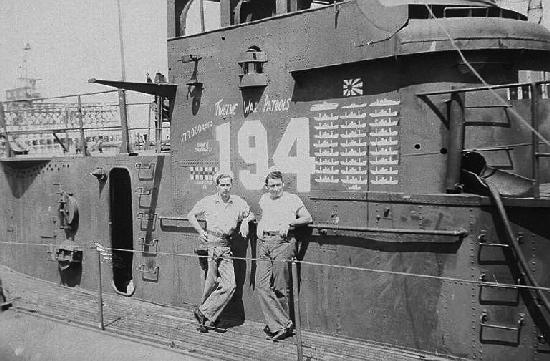
SEADRAGON's 9th war patrol, 14 December 1943 to 5 February 1944, took
her back to the Carolines where she hunted enemy shipping on the
Truk-Saipan route and damaged two, possibly three, cargomen. Refit brought
the replacement of SEADRAGON's 3" deck gun with a 4", and, on 1
April, she cleared Pearl Harbor for the Japanese home islands for her 10th
war patrol. On the 5th, she crossed the International Date Line. On the
15th, she entered Japanese waters. On the 16th, she moved past O Shima,
and, that night, commenced patrolling off the Bungo Strait and Kii Channel
entrances to the Inland Sea. On the morning of the 23d, she sighted four
freighters, escorted by three patrol boats, moving toward Shiono Misaki.
She closed the convoy; fired on the third ship, the heaviest laden; then
went deep and rigged for depth charging. The patrol boats moved toward
SEADRAGON as the target sank and, during the next two hours,
delivered a 40 depth charge attack. Later that day, the submarine
conducted an unsuccessful attack on a naval auxiliary; and, on the 26th,
she moved out into the Tokyo-Manila shipping lanes where she damaged a
freighter on the 27th. On 28 April, she commenced patrolling the Nagoya-Saipan
route. In May, she took station off the entrance to Sugura Wan and, on the
3d, shifted to the Tokyo-Guam-Saipan-Truk sea lanes. Two days later, she
hunted enemy traffic at the entrance to Sagami Wan. On the 13th, she
headed for Midway. On the 17th, she caught an armed trawler in a surface
attack; set it afire with 4" gun salvos, then closed the target to take
off the uniformed enemy crew. The surviving crew members refused to
surrender, and SEADRAGON continued eastward. On the 21st, she
crossed the 180th Meridian and stopped at Midway; thence got underway for
Pearl Harbor, arriving on the 25th.
Reengined
at Mare Island during the summer, SEADRAGON returned to Pearl
Harbor on 7 September and departed on her 11th war patrol, a coordinated
patrol with submarines USS SHARK (SS-314) and USS BLACKFISH
(SS-221), on the 23dr. She arrived at Saipan to top off on 3 October. On
the 4th, SHARK and BLACKFISH continued on to the
wolfpack's assigned area in the northern China Sea. SEADRAGON,
delayed by the need for repairs, did not depart until the 5th. On the 9th,
she arrived off Batan Island, established contact with SHARK and
BLACKFISH, and took position in a scouting line in the pack's
assigned area. On the night of 21 October and the morning of the 22nd, the
group went after an enemy warship formation lead by a carrier. At 0615 on
24 October, SHARK reported a contact, and SEADRAGON
headed for the scene. At 0730, the contact was sighted through the high
periscope, but it proved too distant. At 0920, SEADRAGON sighted
three enemy merchantmen in a loose column with a torpedo boat destroyer
and an airplane as escorts. At 1055, she fired four torpedoes at the lead
freighter.
The first
torpedo broached and ran erratic, alerting the escort which started for
SEADRAGON. SEADRAGON rigged for depth charging. Soon
thereafter, two torpedo explosions were heard, and, at 1101, the first of
8 depth charges was dropped. At 1154, SEADRAGON went to periscope
depth. The escort was milling around picking up survivors four miles
astern. The remaining merchant ships were ahead of the submarine and
making only 2 or 3 knots. As SEADRAGON prepared to fire again,
the destroyer rejoined the formation. At 1114, SEADRAGON fired
four more torpedoes. Three hits were observed. The submarine's second
target of the day sank in less than two minutes. SEADRAGON went
deep. Fifteen depth charges followed. At 1310, the submarine returned to
periscope depth. The deck of the sole remaining freighter was crowded. The
freighter was smoking heavily and moving slowly. The escort circled the
freighter. At 1404, SEADRAGON fired. The first torpedo tore off
the freighter's bow. The rest of the ship went under quickly. At 1405, the
first of 25 depth charges was dropped.
Postwar
examination of Japanese records identified the sunken ships as a cargo
ship, and two passenger-cargomen. At 1858, SEADRAGON tried
unsuccessfully to raise SHARK. She had been sunk after attacking
the contact of her 0615 transmission. On 26 October, SEADRAGON
headed toward Luzon. On the 27th and 28th, she searched for downed
aviators; and, on the 29th, she was ordered to return to Midway. Arriving
at her destination on 8 November, she commenced refit; and, on 3 December,
she headed west for her 12th war patrol. The patrol took her back into
Japanese waters where she hunted enemy shipping and searched for downed
aviators into January 1945. On the 10th, she moved into the Bonins, where
she continued those two roles. On 19 January, she set a southerly course;
and, on the 22nd, she arrived at Guam to complete her last war patrol.
The next
day, SEADRAGON continued on to Pearl Harbor, and, after refit,
returned to California to provide training services to naval air units. In
May, she was transferred back to the Atlantic Fleet and for the final
months of the war, provided training services at Guantanamo Bay and Key
West. In September, she moved north to New London, thence to Boston where
she was decommissioned on 15 November 1945. Less than four months later,
on 8 February 1946, she was recommissioned to assist in the inactivation
and preservation of submarines, including U-boats, at Hingham, MA. On 29
October 1946, she was again decommissioned and berthed as a unit of the
Atlantic Reserve Fleet where she remained until struck from the Navy list
on 30 April 1948. SEADRAGON earned 11 battle stars during World
War II.
Email received on 16th February 2005.
Mike thought you might like
to know that the pharmacist mate on the USS Seadragon SS194, on her fourth war
patrol, will be receiving his long overdue Navy Commendation Medal by the
former Surgeon General of the Navy RADM Mike Cowan this sunday 20 Feb 05 at Naval
Hospital Camp Lejeune, North Carolina...Wheeler Johnny Lipes rose through the
ranks from SA to LCmdr retiring in 1962. He preformed the emergency appendectomy
on 11 Sep 42 on 19 year old Darrel Dean Rector..The XO Lt.Norvel Ward (RADM RET.)
not only witnessed the historic event but also assisted Lipes. Darrel Rector
survived the appendectomy but did not survive the war. He went down on the USS
Tang on her fifth war patrol....Respectfully,
John M. (Squirrel) Herina (SS) SSBN622B Tar Heel Base US Subvets ..Mike, Very
Nice Web Honoring The Greatest Generation. |

